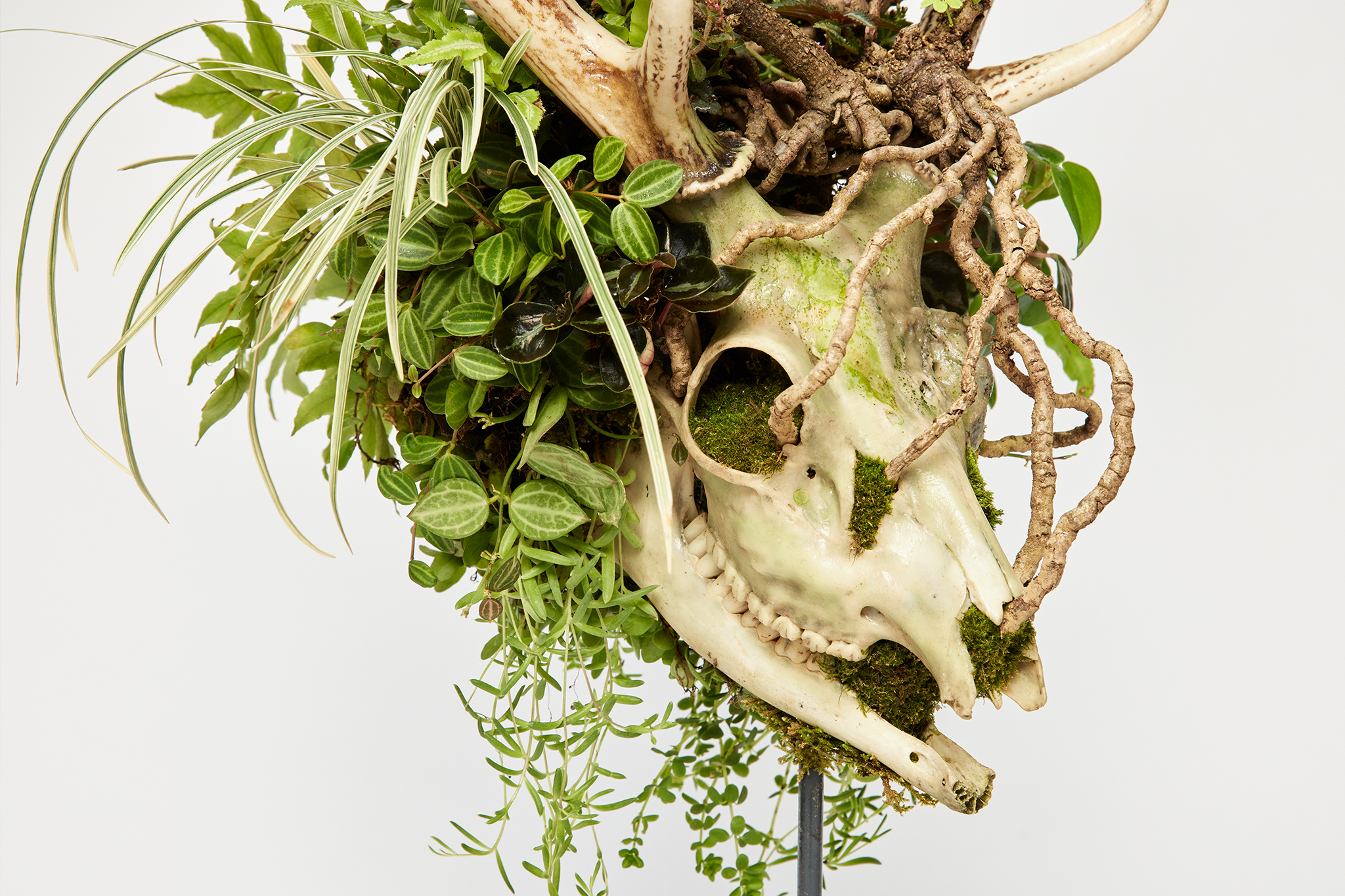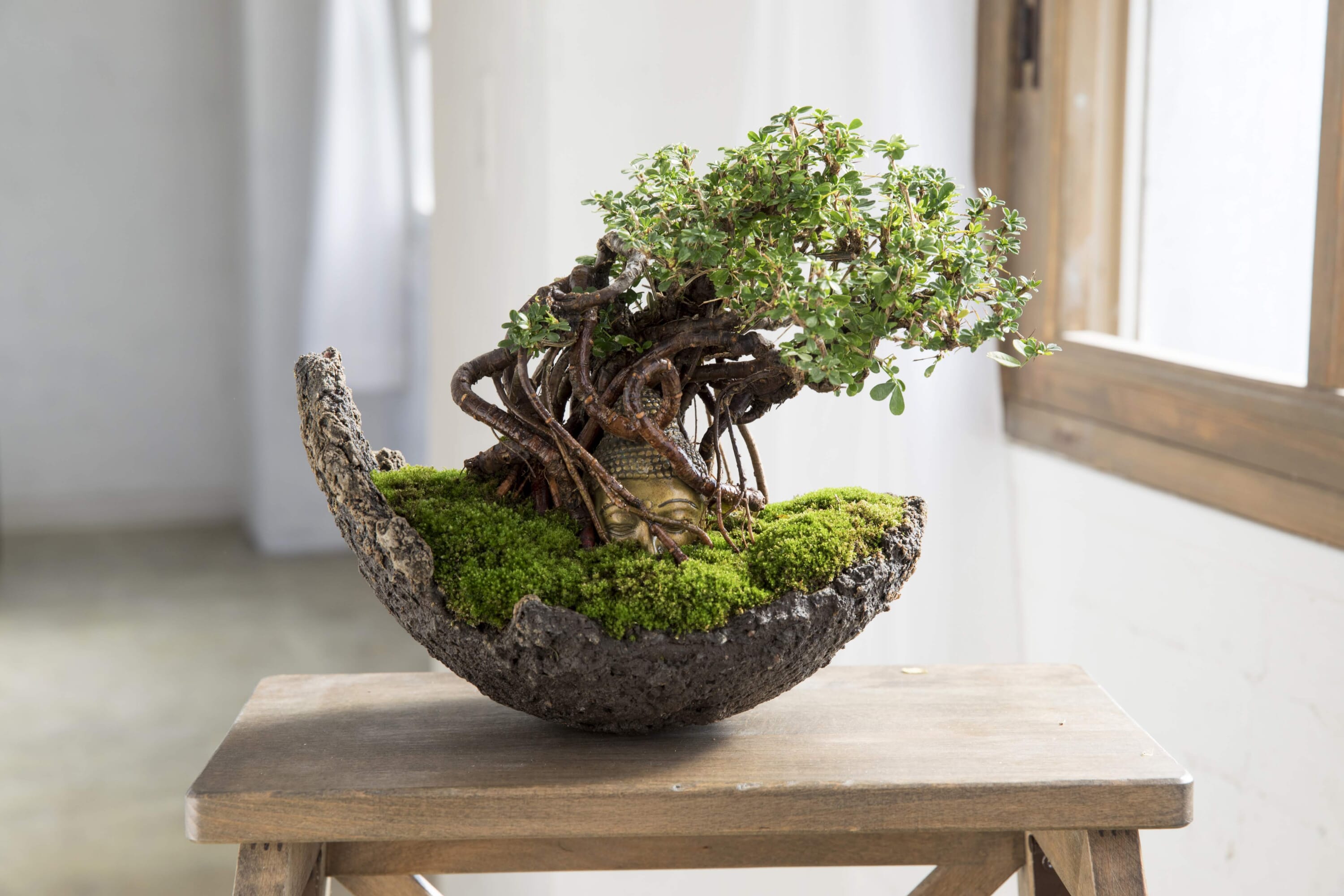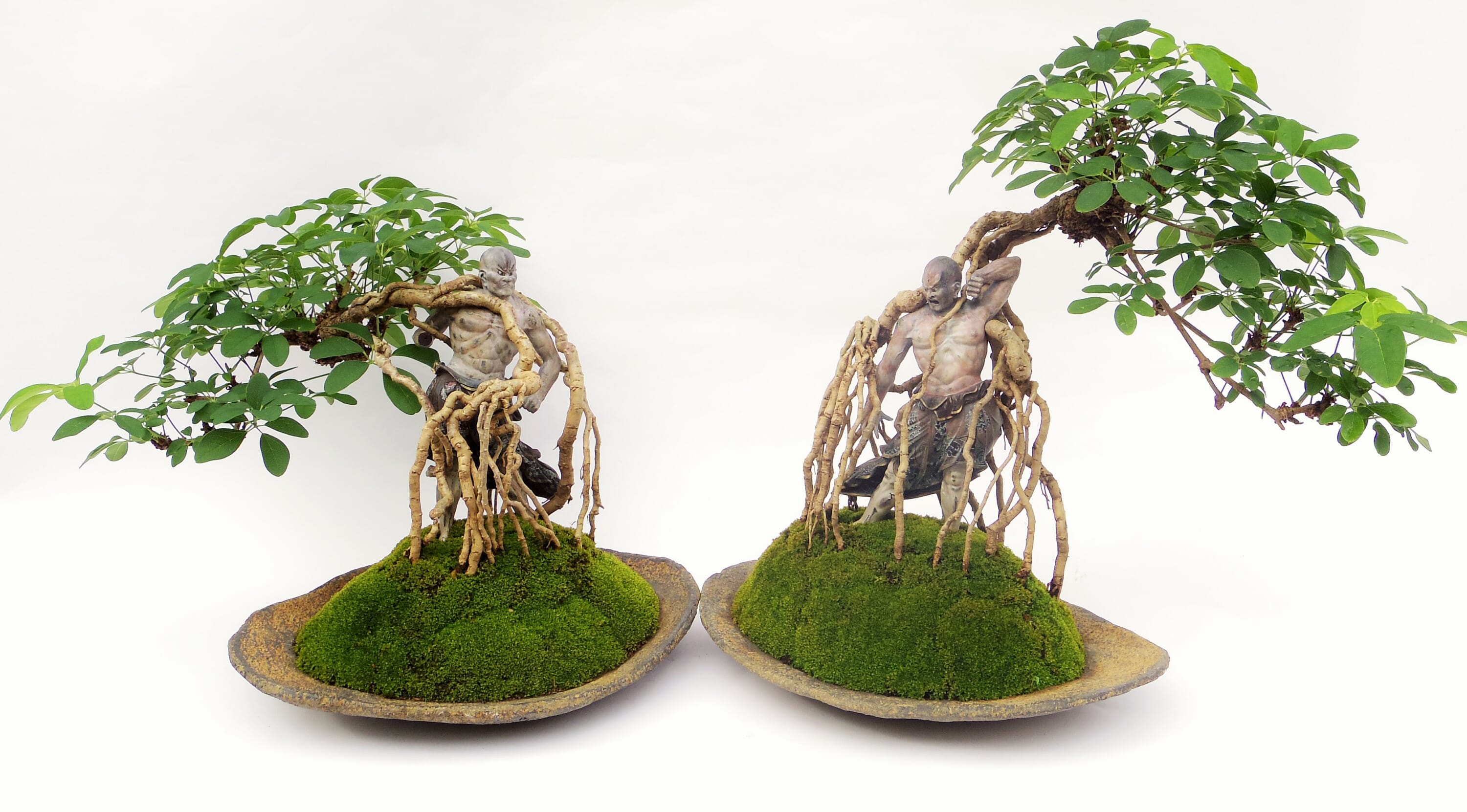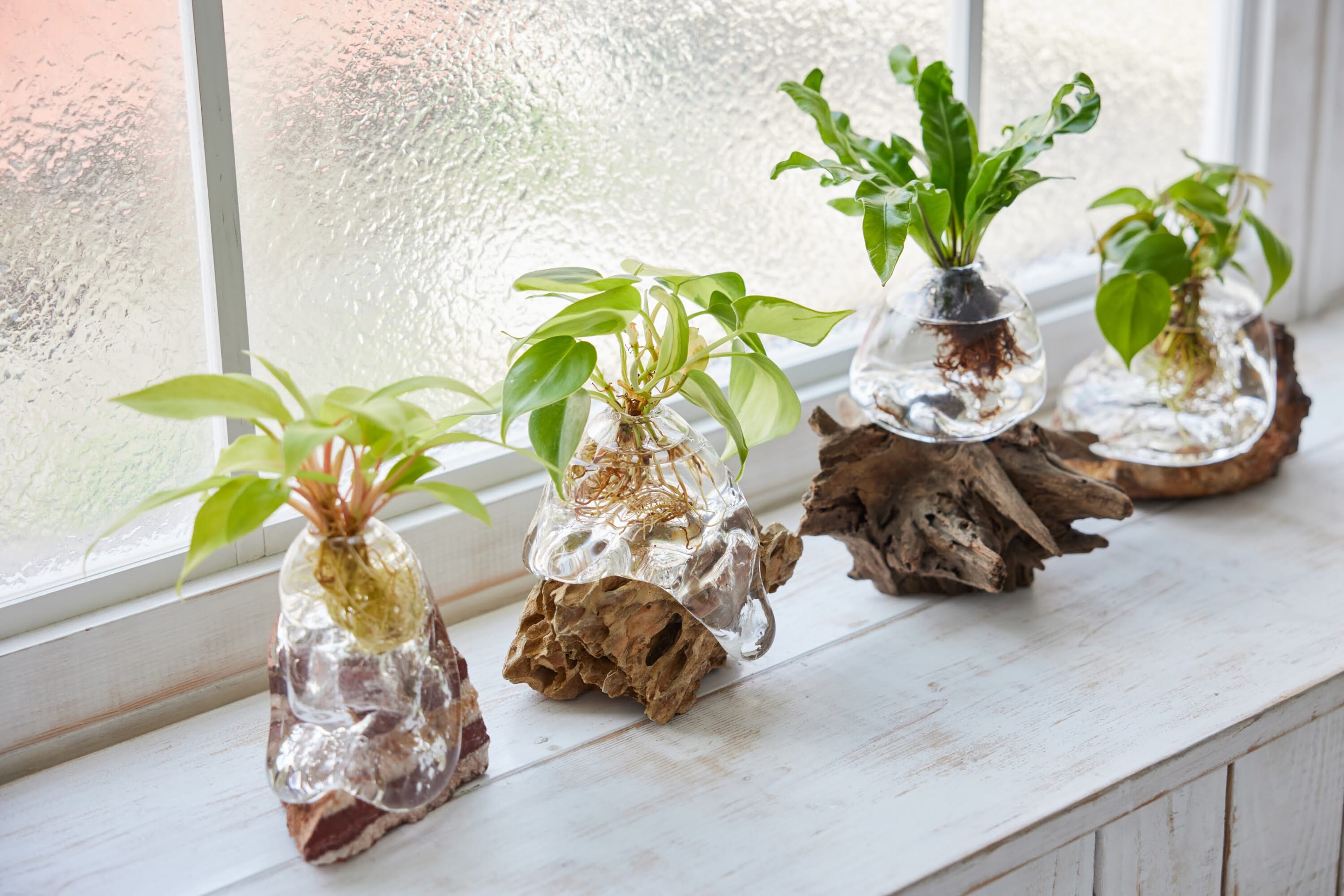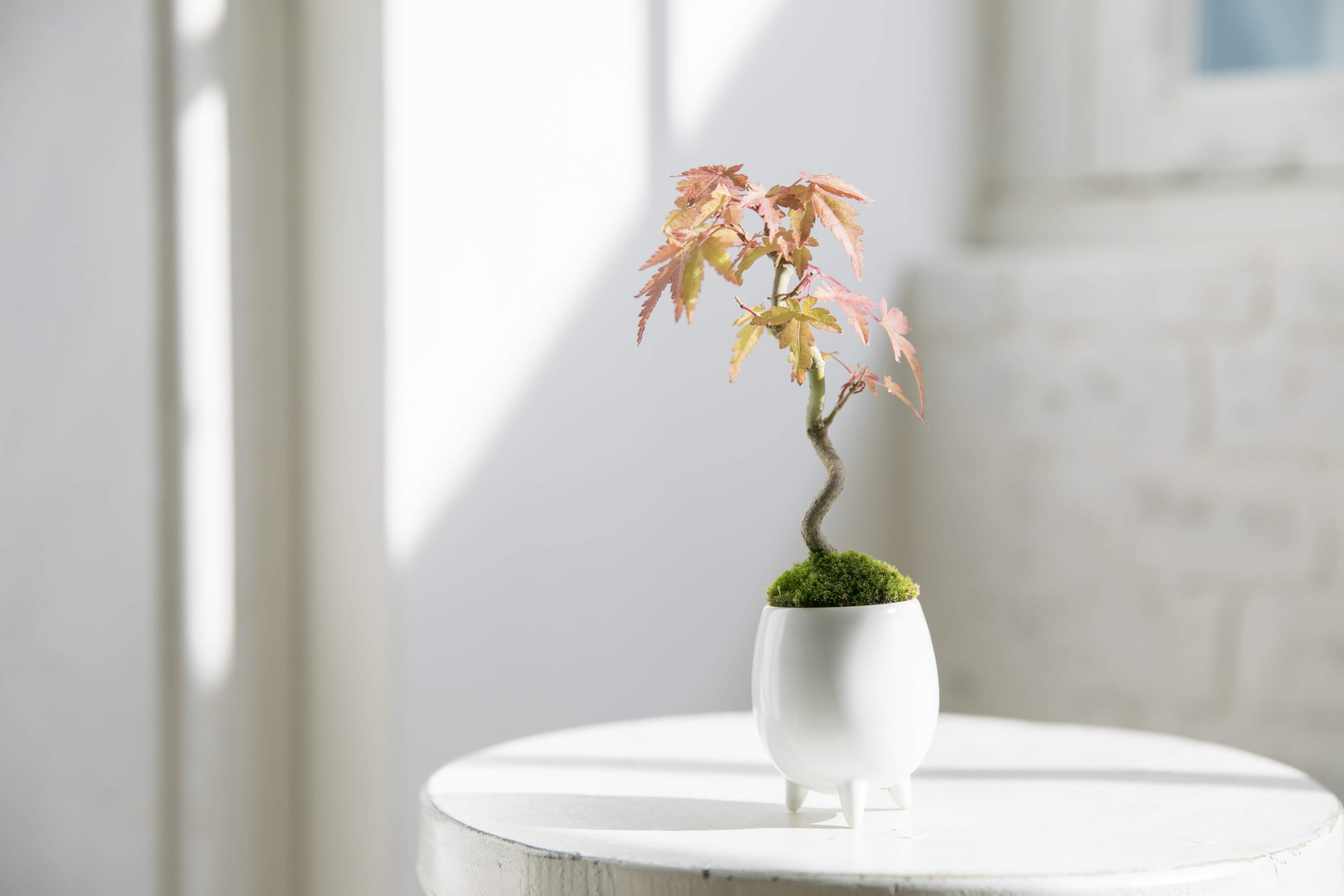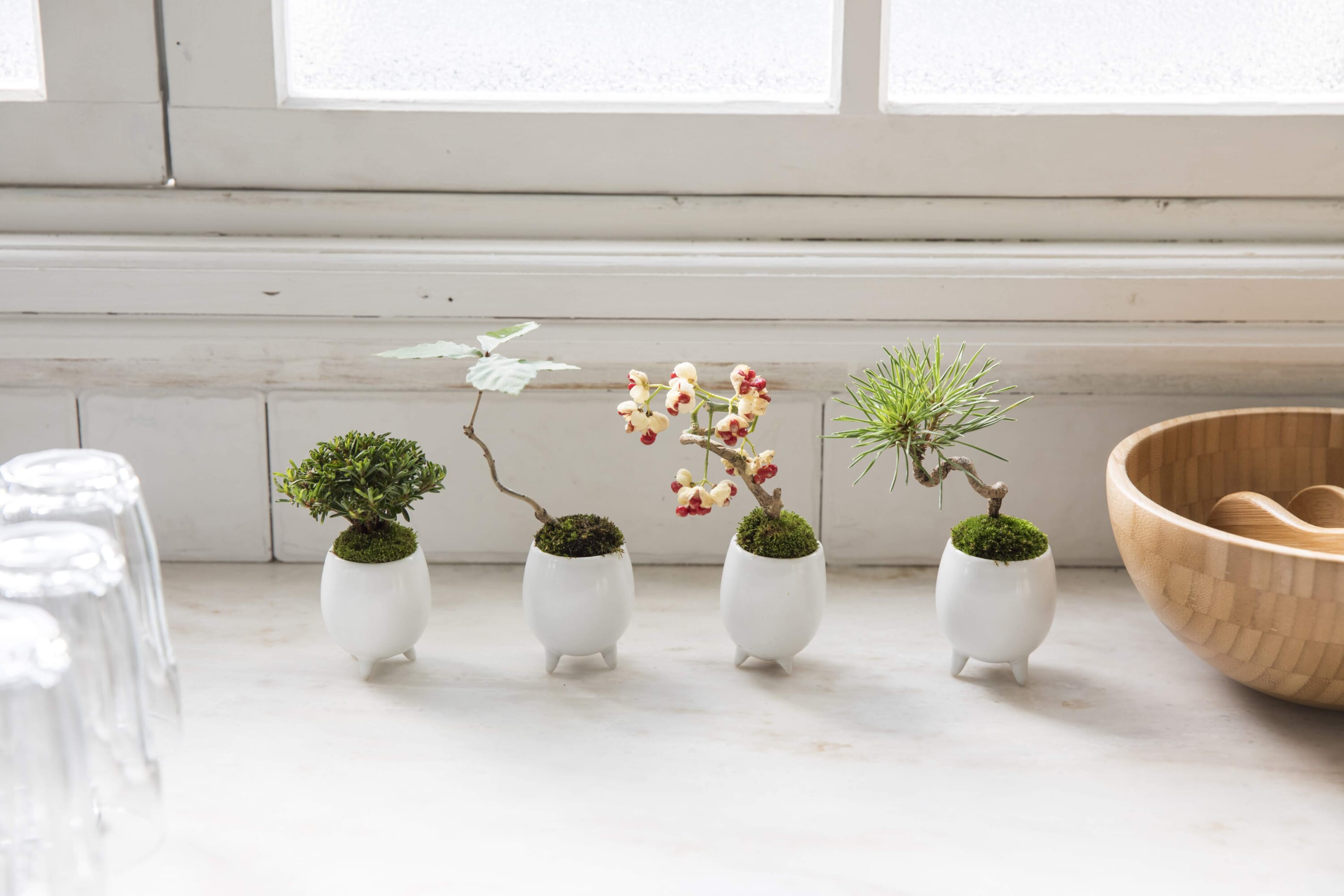Self-taught and self-planted in the centuries-old Japanese craft of bonsai, Daisuke Nakajima seemingly sprung out of nowhere when he pivoted his life to bonsai a decade ago. He had a decent career as a TV director, then hopped into publishing, serving as an editor for several years. Fittingly, both jobs involved nurturing as well as strategic cutting to create a work of art. In his own life, too, Nakajima had to prune a few wayward branches from his path to find himself at his happiest as a bonsai artist.
“Plants are calming my heart,” the bonsai artist tells TW when we meet. He contrasts his current profession with his past ones, which were becoming too busy and stressful to bear. Working with plants has been confirmed to be therapeutic by a multitude of medical studies. It’s no wonder we witnessed a boom in household plants at the start of the Covid-19 pandemic. “Even if it’s only one plant, have something green and alive in your home. You’ll be happier,” Nakajima says.
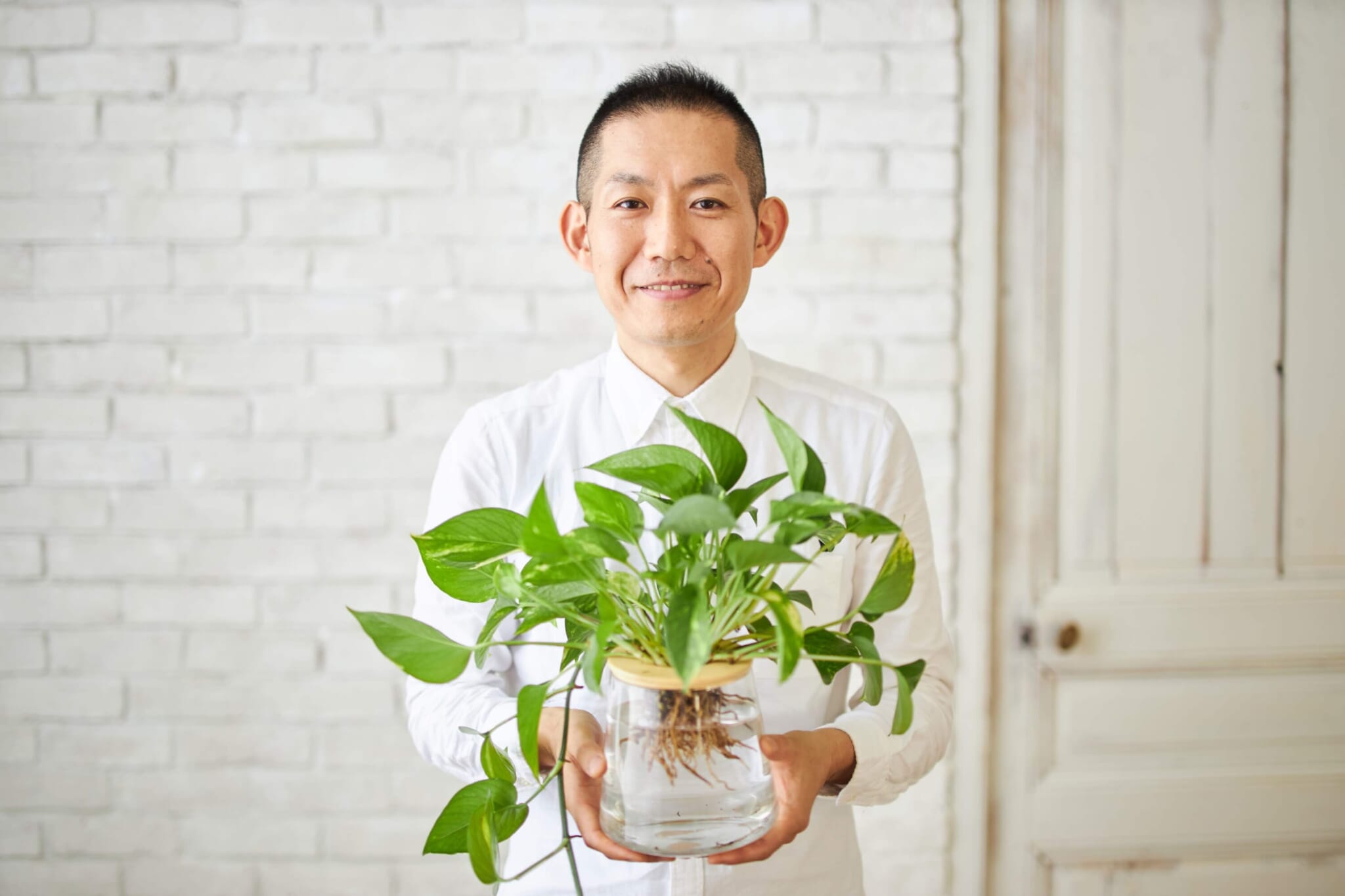
Tokyo Bonsai Lifestyle
No deep roots in the bonsai world meant no strict rules for Nakajima. This is often the case in gatekept traditional arts and crafts in Japan, where inheriting a long family tradition and having your way paved by predecessors is both a blessing and a curse. As a newcomer, what Nakajima lacked in pedigree, he made up for in effort, passion and curiosity. Five years into growing classic bonsai, he started experimenting and innovating. It was not only to spur his own creativity, but also a way to challenge ingrained notions.
“Bonsai might actually be more popular abroad because in Japan, it is seen as a hobby for old men,” Nakajima remarks with a wry smile. “So, of course, young Japanese people think it’s not cool.”
Setting out to change this, Nakajima decided to create never-before-seen bonsai that grow from skulls, wrap around Buddha heads and host temples and pilgrims. Boasting all the traditional artisanry and bonsai techniques with added fanciful flair, it’s a venture dubbed Tokyo Bonsai Lifestyle — because if you’re going to innovate, experiment and evolve, there’s no better place than the hyper-modern Japanese capital.
“The meaning of ‘lifestyle’ is my hope that many people will become familiar with bonsai and make it a part of their lives,” Nakajima explains.
Tree Incarnations
In one of Nakajima’s most popular projects, a deer jaw screams out from the bony roots of a bonsai. Other skulls sport phantom mossy tongues and antlers wrapped in vines. Dubbed “Skull Bonsai,” this project interlocks life and death in perfect juxtaposition, capturing the circle of life in one small plant pot. It’s an eerily beautiful image of the duality of nature: nurturing and consuming all life in perpetuity.
In addition to themes of rebirth, Nakajima peels back another narrative layer of “Skull Bonsai” to show us the sustainability aspect of this series.
“Almost 90% of all wild animals killed by hunters in Japan are thrown away,” he tells us. The initial spark for this project was to find some use for the dead animal skeletons, showing respect for the lives that had to be taken away. He sources the skulls from Saitama hunters who share his views on wastefulness. In a way, these bones get a second life instead of ending up in a landfill.
“It’s usually deer or boar skulls since these are the animals that need to be culled,” explains Nakajima. “Sadly, their natural habitat is being destroyed, resulting in them entering crop fields and populated areas.”
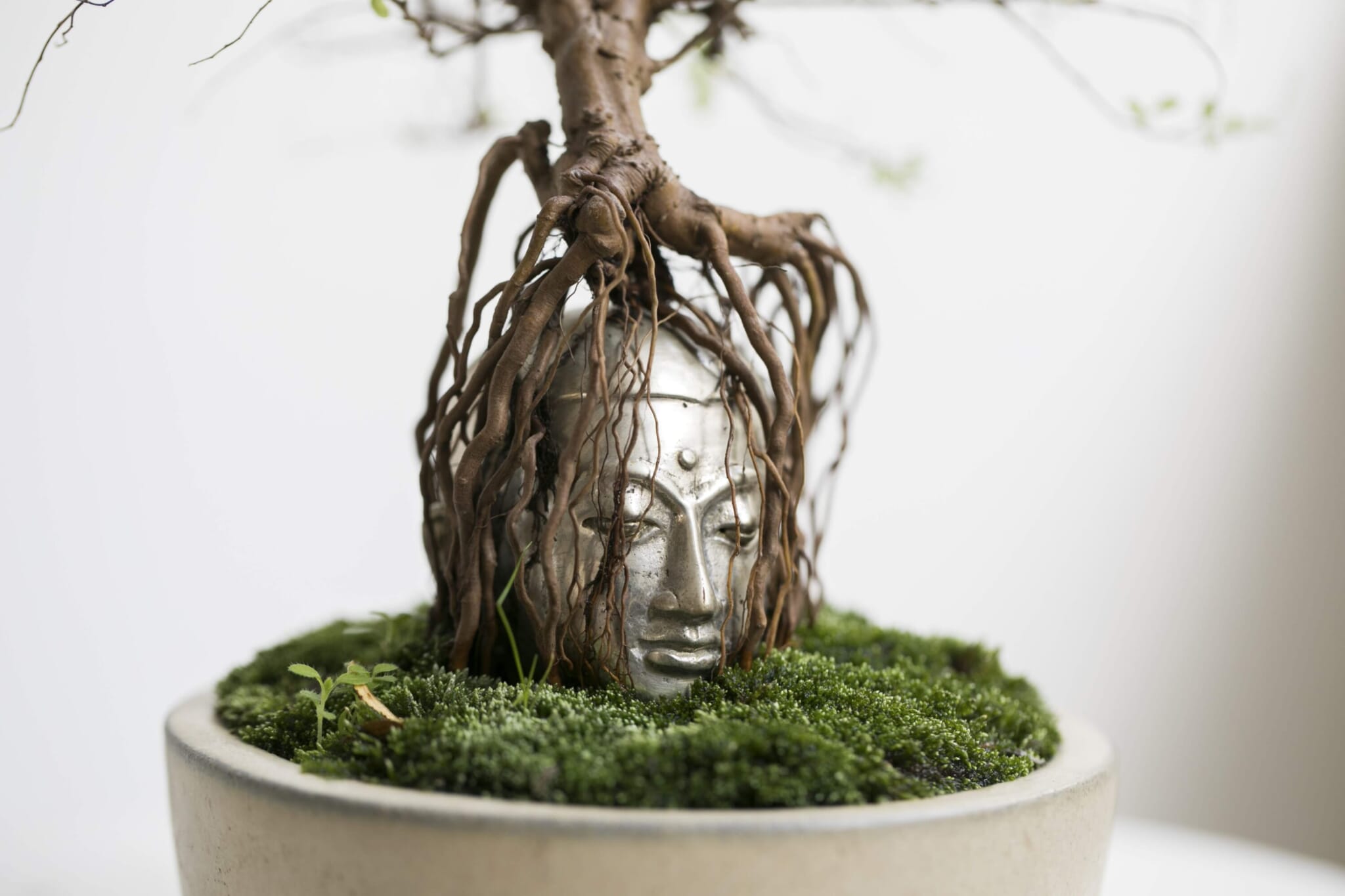
Death, reincarnation and the unstoppable force of nature are themes interwoven in the “Buddha Bonsai” series. Inspired by his trips to Thailand’s Ayutthaya and Cambodia’s Angkor Wat, these bonsai trees grow around Buddha statues, often just the heads. They engender an impression of centuries passing and civilizations crumbling, despite being just a few years old.
“There were Buddhist monks at the Phnom Penh exhibition, taking photos of my work and really enjoying the bonsai,” Nakajima says, explaining that his work was well received in Cambodia. Although religious Buddhist imagery is involved, Nakajima’s respect for it is undeniable. He takes inspiration from real archeological sites and goes as far as to order the Buddha miniatures from artisans in Bali who hand-make religious items. Unsurprisingly, “Buddha Bonsai” won Nakajima an Excellence Prize at the 2018 Exhibition Design Art of Asian Regionality and Climate in Phnom Penh.
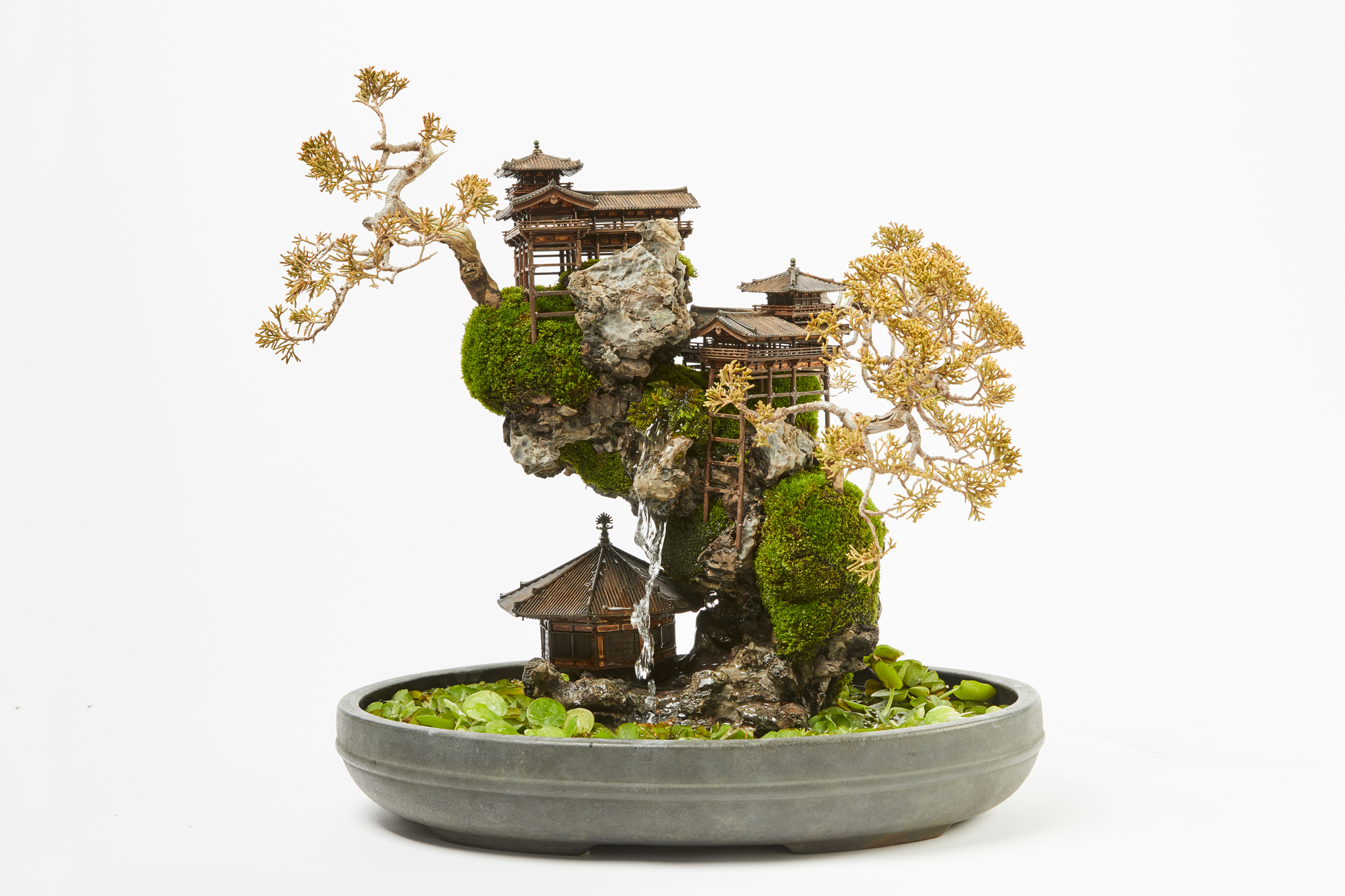
A World in the Palm of Your Hand
Buddhism features in another of Nakajima’s art concepts: “Cliff Bonsai,” which blends bonsai and dioramas. The artist creates towering cliffs out of river rocks and perches realistic-looking 3D-printed Buddhist temples on them. Then he plants Yezo spruce, Chinese elm and Japanese juniper to complete the mystical mossy scenes where he imagines pilgrims walk. These diminutive worlds feature waterfalls and torii gates too. Unlike classic bonsai with a front and back side, “Cliff Bonsai” are meant to be observed from every angle.
“Preserving a slice of nature is the goal even of classic bonsai,” Nakajima explains. “I just add a little bit more and show human-made wonders too.”
Recently, the artist has challenged himself to scale down from mini to micro. His “Micro Bonsai” are as tiny as a sake cup and usually have just one or two branches. “Even though they are smaller, they take seven to 10 years to grow to this,” Nakajima says. They also require as much — if not even more — care and dedication as classic bonsai.
Further challenging the definition of bonsai, Nakajima has lately been doing away with soil altogether to create the water-based “Aqua Bonsai.” This has led to another venture, a plant art studio called Wootang (stylized as WOOTANG) that focuses on plants without soil, whether ornamental foliage, cacti, succulents or air plants.
Wootang, whose name comes from the Malay word for “forest,” features hydroponic plants in glass containers, some of which have a surreal, melting Dali-esque shape. These one-of-a-kind vases are handmade by a glass artist, but Nakajima himself has been branching out into glass making in the last three years. He tells us excitedly that he’s now learning to make stained glass to use it for bonsai, creating an East-meets-West multicultural bonsai. It’s an upcoming series that we have yet to see grow, but it already seems like a good match — a temple of glass to hold the life of the earth.
Nakajima’s bonsai creations can be seen on the Tokyo Bonsai website, while plants for purchase can be found at his online store. Workshops and lessons are also available.

